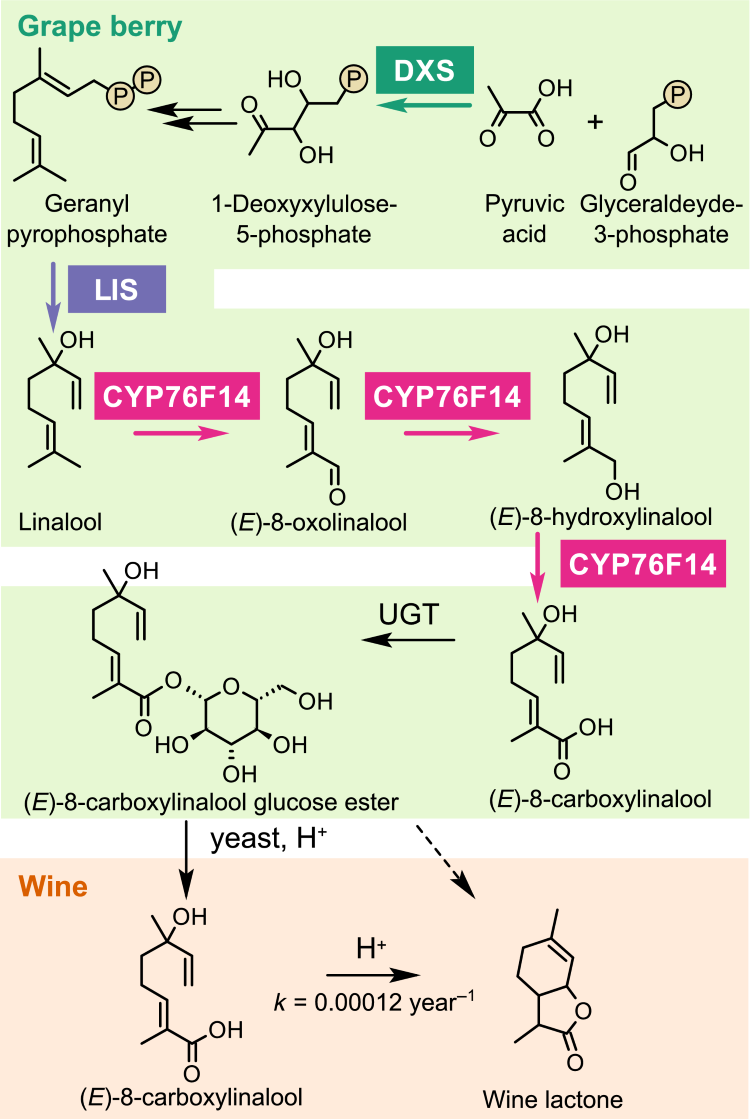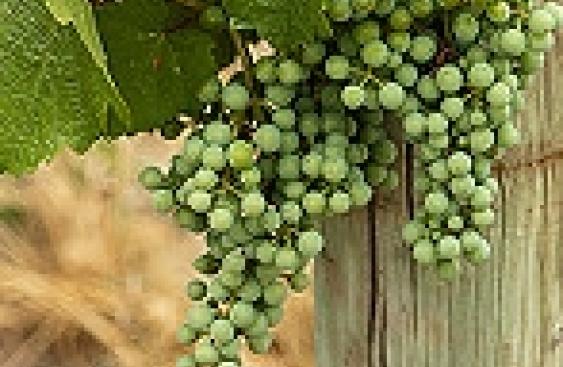As any reader of the often florid tasting notes that accompany wine will know, aroma is important. Among the group of compounds that create the aroma in wine, wine lactone is the most potent. In this New Phytologist paper, researcher Nicolas Navrot and colleagues describe how they discovered a key enzyme that plays a leading role in the formation of the compounds that eventually give wines their sought-after aroma.

Figure 1 from Ilc et al.: The pathway of wine lactone formation. Highlighted enzymes (DXS, 1-deoxy-d-xylulose-5-phosphate synthase; LIS, linalool synthase, CYP76F14) correspond to the quantitative trait loci (QTLs) associated with grape berries (E)-8-carboxylinalool concentration.
The enzyme the researchers investigated is known as cytochrome P450 CYP76F14. By analysing a large sample of French grapes and wines (using an technique called liquid chromatograph mass spectrometry, not their taste buds), the researchers found that, during grape growth, this enzyme helps to convert a common plant compound, monoterpenol linalool, into a different compound, (E)-8-carboxylinalool. The formation of this compound is an important next step on the road to aroma: as grapes age, (E)-8-carboxylinalool is gradually converted into wine lactone, which gives wine its nose.
The discovery of this precursor of wine aroma in grapevines won’t just contribute to our understanding where aroma comes from, but could also impact the grapevine breeding and wine making, as well as the aroma and scent, beverage and food industries. "Combining different analytical techniques was key in our work, and this broad picture helped us learn more about how common plant molecules are transformed into specific wine aroma," said Dr. Nicolas Navrot, senior author of the New Phytologist article.
Thumbnail image: flickr/skinnybradger CC BY-NC 2.0
Parts of this page may have been imported from a previous website. If you spot any errors on this page please contact us using the link below.

